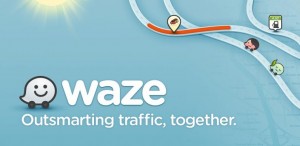Waze has been around since 2008, but it became a news headline this week when rumours circulated that it may soon be acquired by Facebook for $1 billion [here’s one news story; there are many]. In a happy coincidence, the founder of Waze, Uri Levine, happened to be speaking at IE just yesterday. It’s always a treat to see a successful entrepreneur live, but there was no mention of mergers or acquisitions in his talk to IE’s students, faculty and interested others. Instead, Levine dazzled the audience with some great ideas about entrepreneurship, which was fitting as he was the keynoter for the one-day programme at IE called “Venture Days”.
What were Levine’s ideas? It might be helpful to tell you a bit about Waze first. Here’s how its own website describes its work:
Waze is the world’s fastest-growing community-based traffic and navigation app. Join other drivers in your area who share real-time traffic and road info, saving everyone time and gas money on their daily commute. Imagine 30 million drivers out on the roads, working together towards a common goal: to outsmart traffic and get everyone the best route to work and back, every day.
In other words, Waze is an app that — based on the reports of many other Waze users — will help you find the best way to get to where you need to go, be it your workplace, an appointment or a meeting with a friend or colleague. Waze, then, is a business built on crowdsourcing. In his talk on “The Power of the Crowd — Lessons Learned”, Levine stressed five key points, which I will summarise here:
- Know who your users [customers] are.
- Make your mistakes fast.
- It’s all about the journey.
- The biggest enemy of good enough is … perfect.
- Focus — it is what we are not doing.
While I can’t provide you at this time a link to a video of his talk yesterday, you can get a feel for Levine by watching this short 2012 video in which he discusses how Waze has been a major disrupter in the field of maps and map-making.
And that was my key takeaway from his IE talk — that he and Waze had to find new, disruptive ways to become the next wave in the world of maps. Levine said that Waze moved toward a crowdsourcing model after it found out how expensive it was to purchase maps from the “big three” suppliers back then: Nokia, TomTom and Google.
He recalled that the first contributors to Waze were drivers who enjoyed playing around with GPS and who were willing to become early adapters of Waze’s emerging technology. In time, with more and more contributors, Waze found that it actually had the best maps available for those locations where Waze users were detailing their driving experience. This accuracy came along with real-time data on what was happening on major roadways — a powerful combination!
He said that Waze found that its users were so insistent on making sure the Waze app reported everything exactly right, that any streets that were not labelled correctly on Waze were called out quickly, allowing the company to maintain quality control in a unique way: by relying on its user base to keep Waze operating at peak efficiency. This may be one reason why Waze was recently awarded the best overall mobile app for 2013. In his IE talk, Levine noted that, just as Wikipedia has just about replaced the Britannica dynasty, Waze could increasingly be seen as a threat to the big three map firms.
Thus the keen interest in Waze by Facebook and perhaps others. Take note: firms successful at nextsensing will quickly grab the spotlight away from even the biggest stars in the field.

